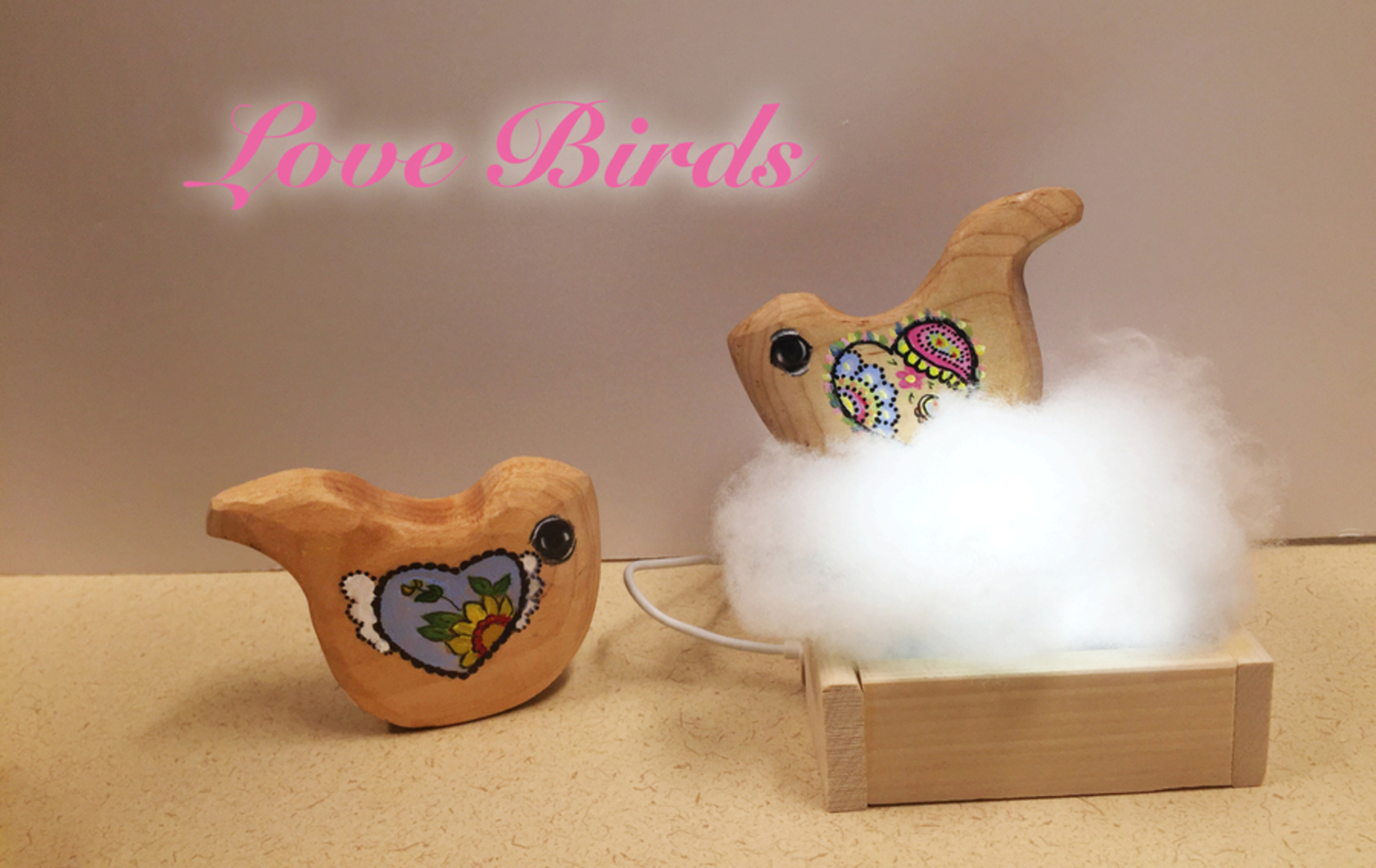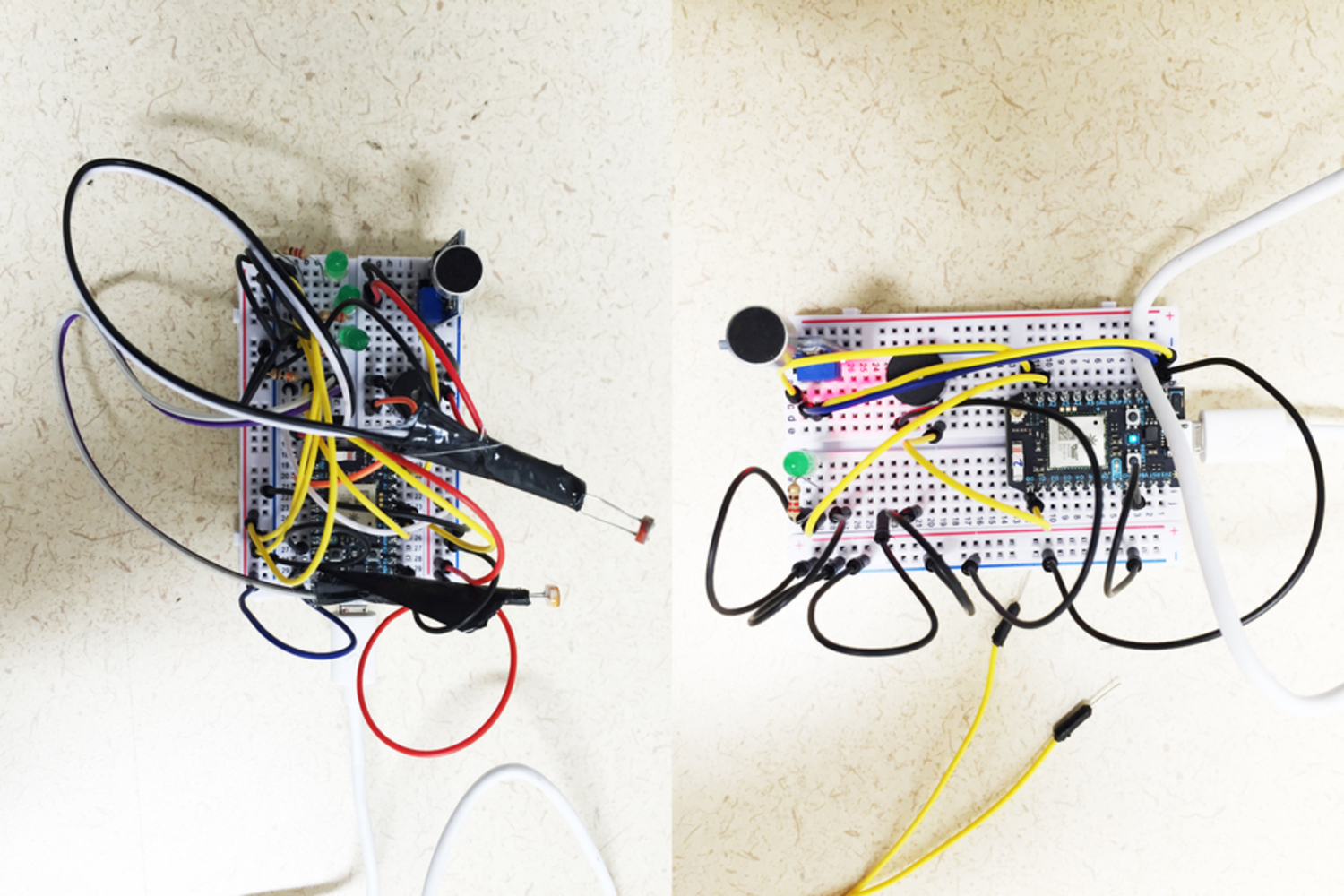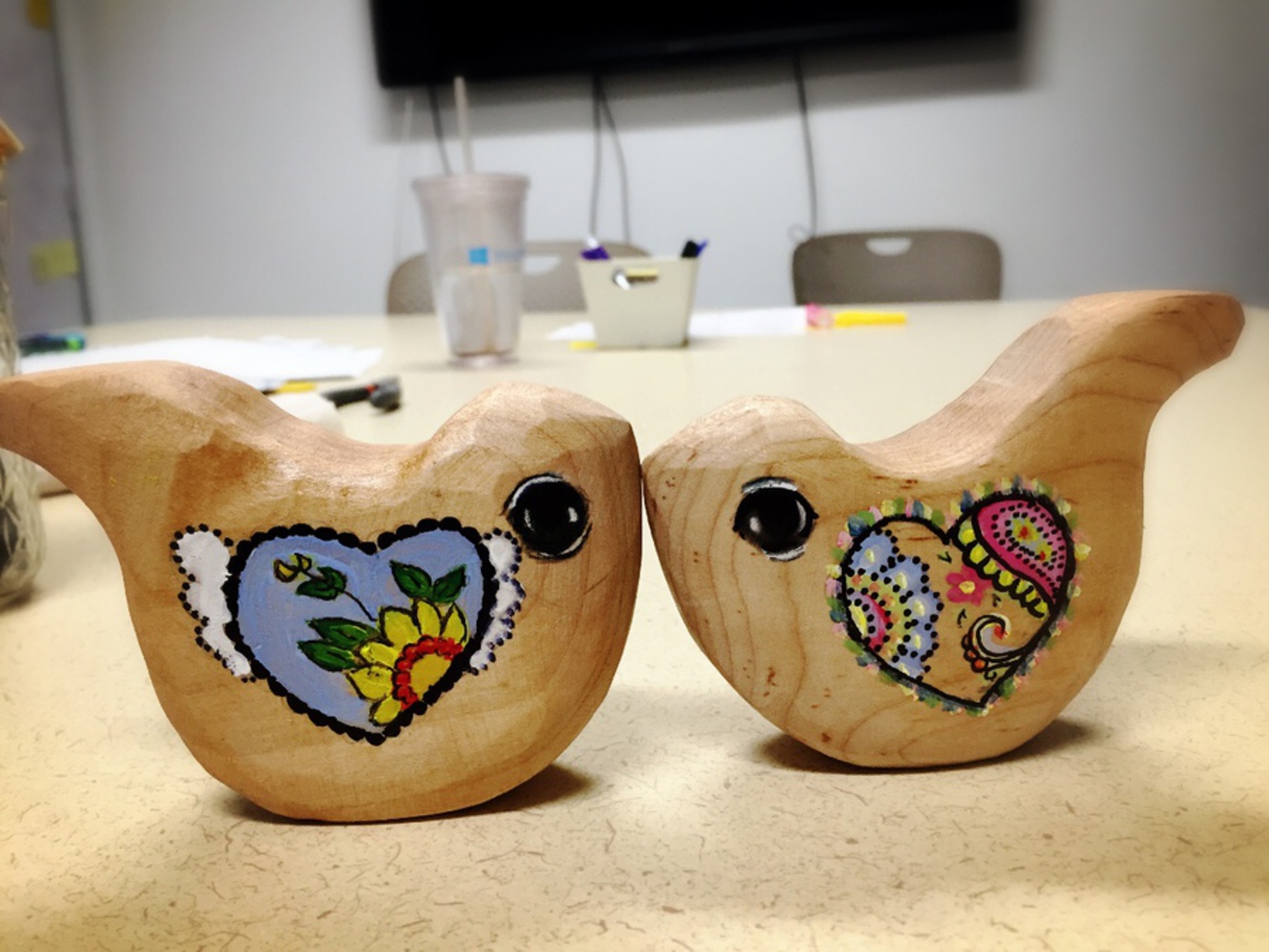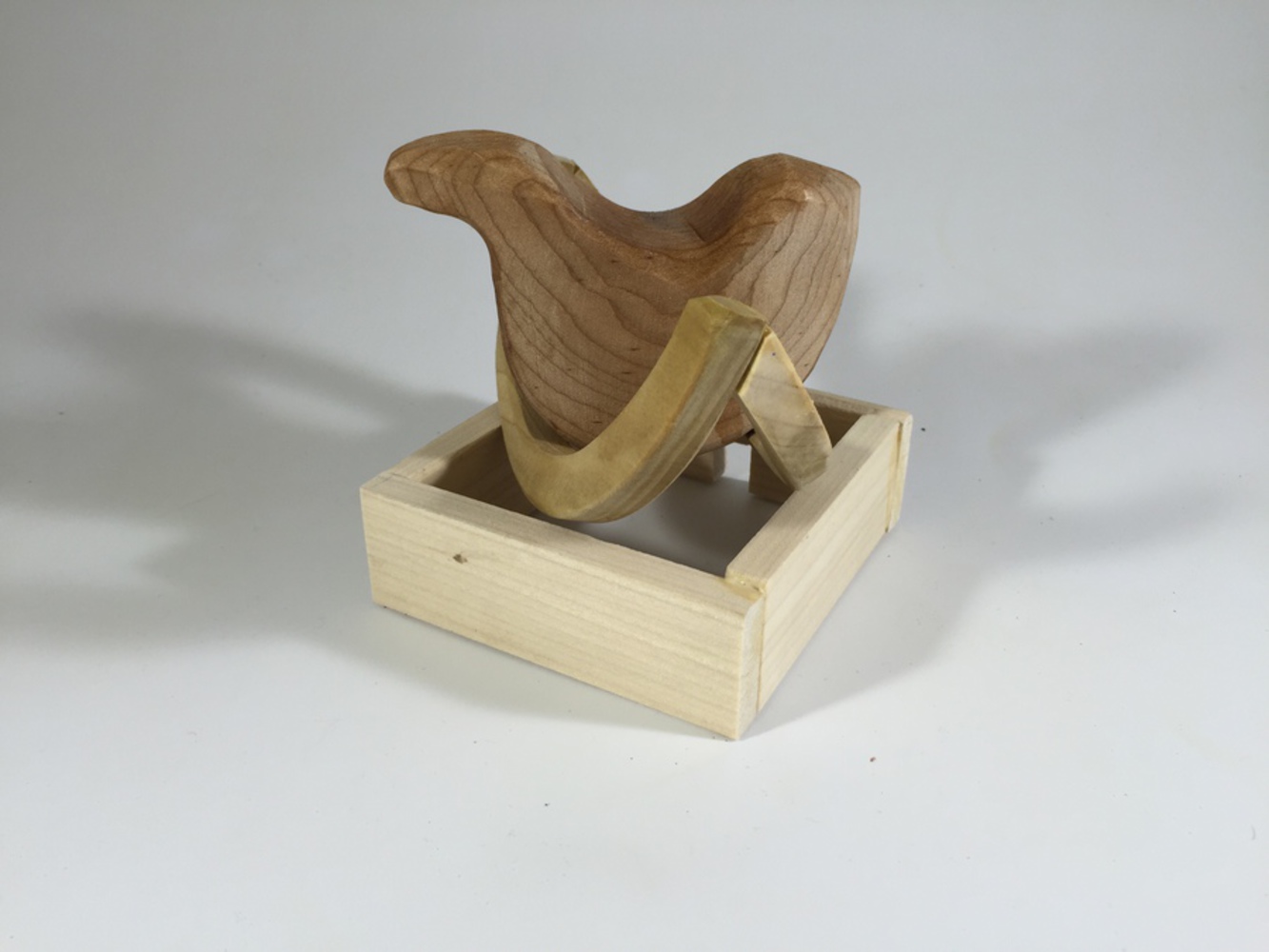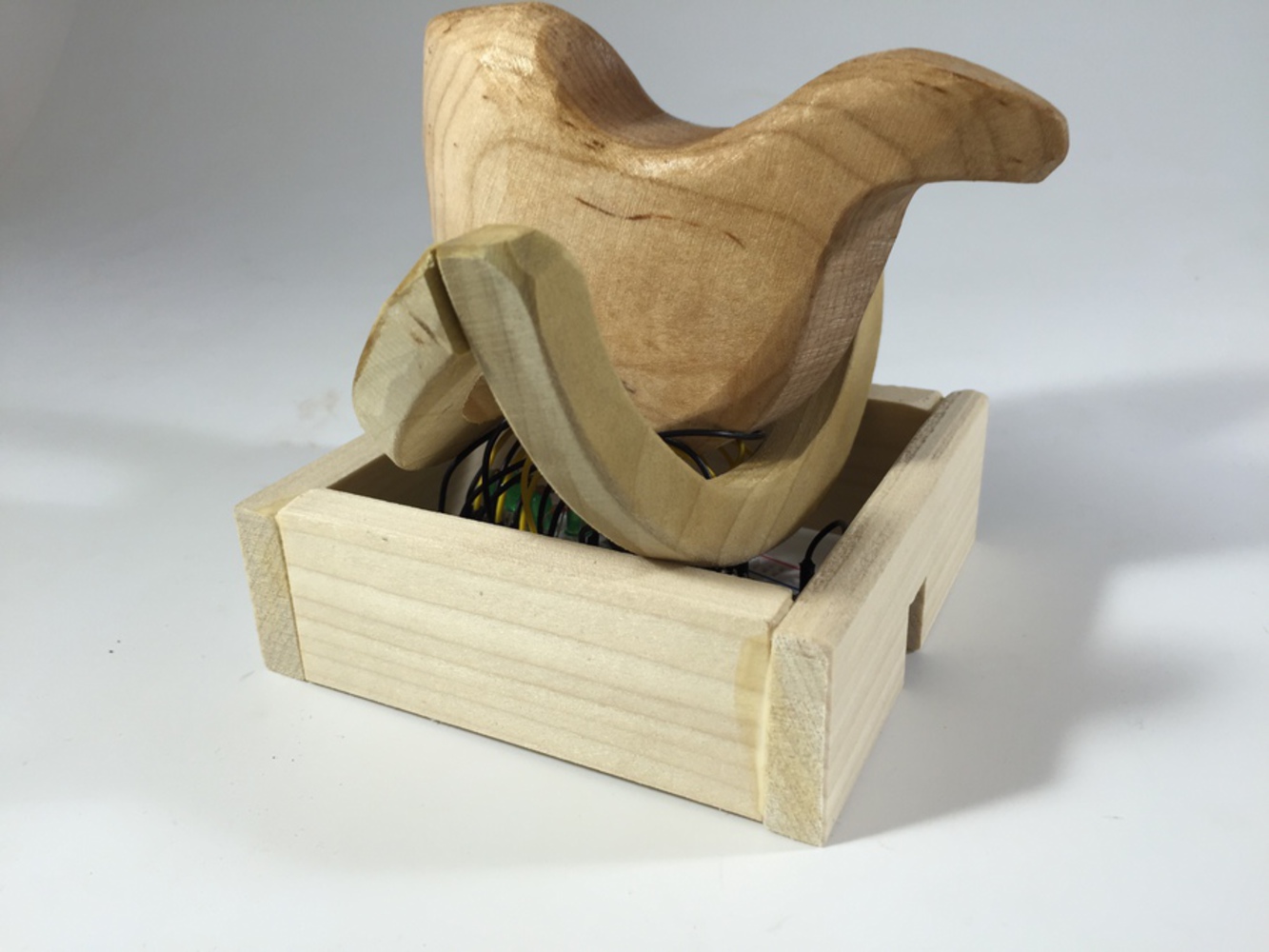Process
Our original vision was to have two birds that would each indicate when a recorded message had been received and was queued for playback. The thinking was that, especially in a long distance relationship, it would be great to hear something spontaneously recorded along the lines of “hi, I love you,” at the beginning of a day. The bird could indicate that a loved one is thinking of you. It could offer surrogacy for affection.
This proved problematic as we discovered that .mp3 and .wav files were tough to download from the cloud. In doing research we discovered that the Arduino analog to digital (A-D) conversion has a sample rate of below 10kHz, meaning we could maybe capture low quality speech, but not music. Also, the memory (RAM) of the Arduino board is very limited, so capturing a lot of audio samples is not really possible, unless we could write them off to an SD card in a timely manner. Ultimately, the Arduino is not really equipped for audio applications; it's really not fast enough. As a result, we pivoted our method to affect this outcome within the scope of this assignment.
The hallmarks of effective relationships are intimacy and vulnerability. The inherent amplification of uncertainty in a long distance relationship heightens the need for affirmation and a sense of safety, to create moments of intimacy from afar. Our team recognized that a purposeful act of kindness and affection could communicate a lot of value in a prescribed intent, and so we felt comfortable in projecting affection in the context of an action that would say “I miss you.” To do this, a user simply needs to touch a bird in its nest. Whenever one bird is touched, the nest of the other will light up and chirp, to communicate that the lover is not really alone.
